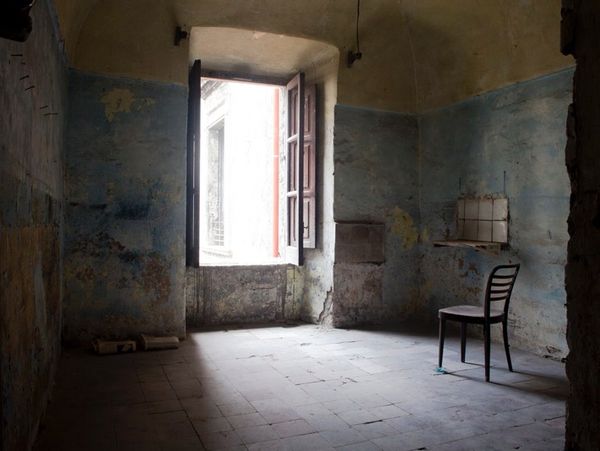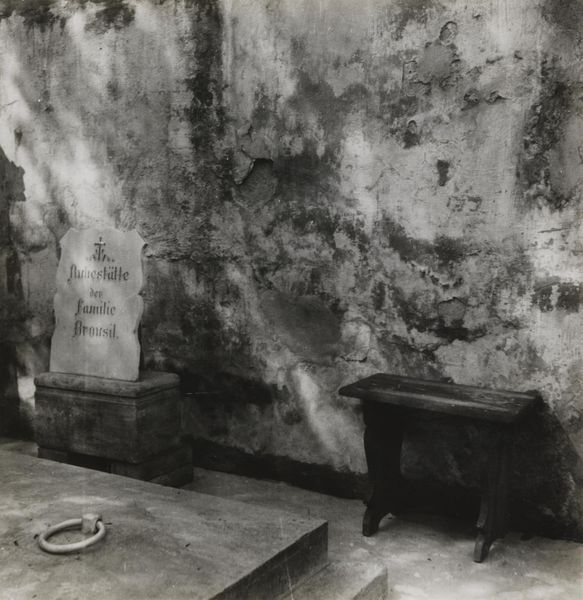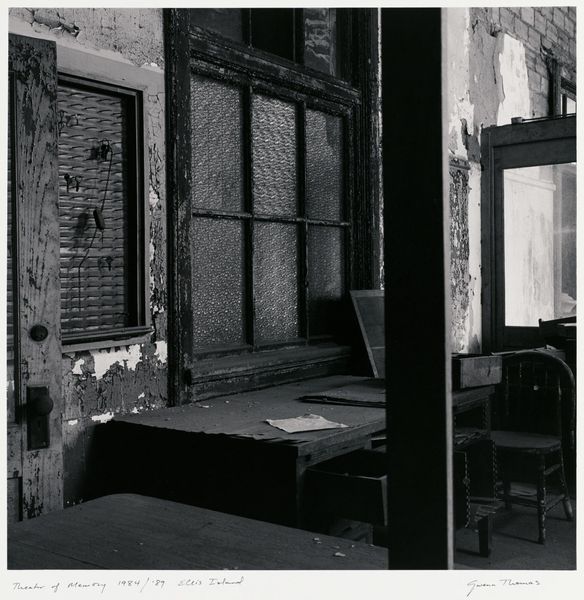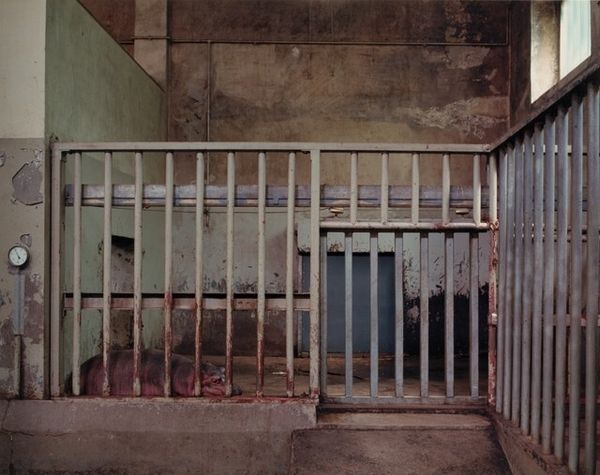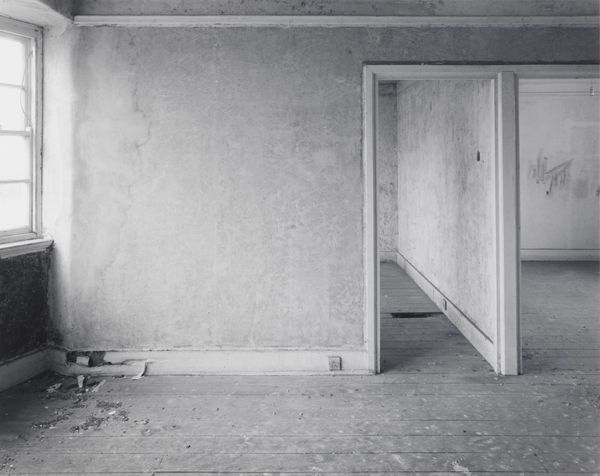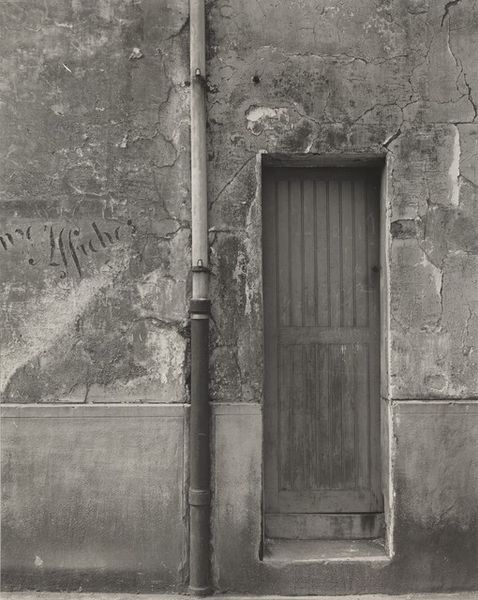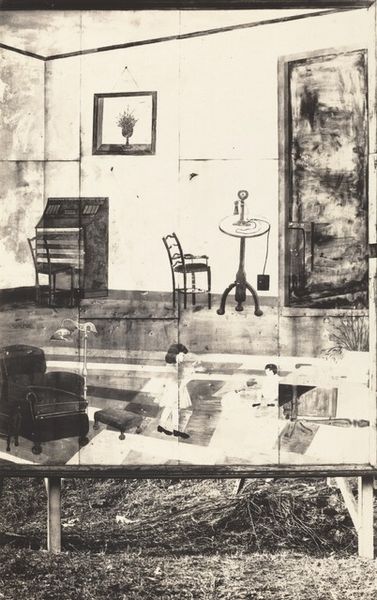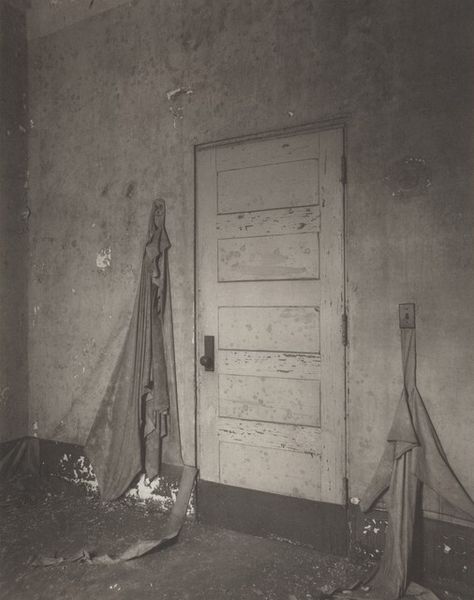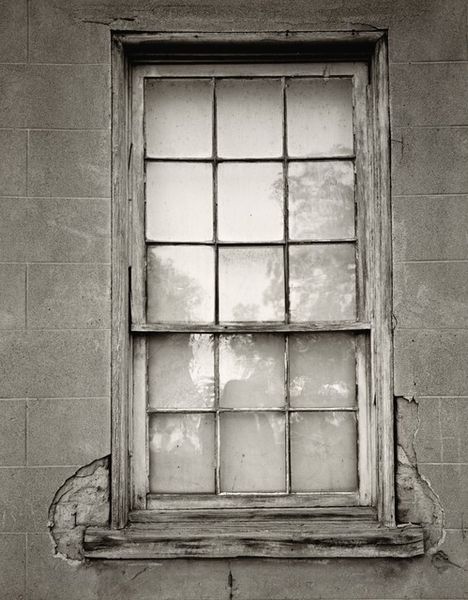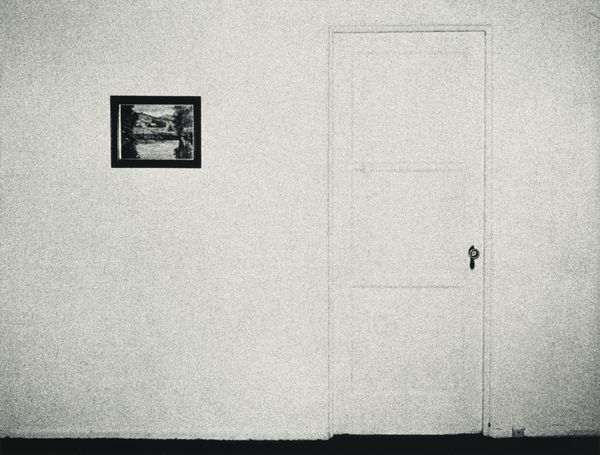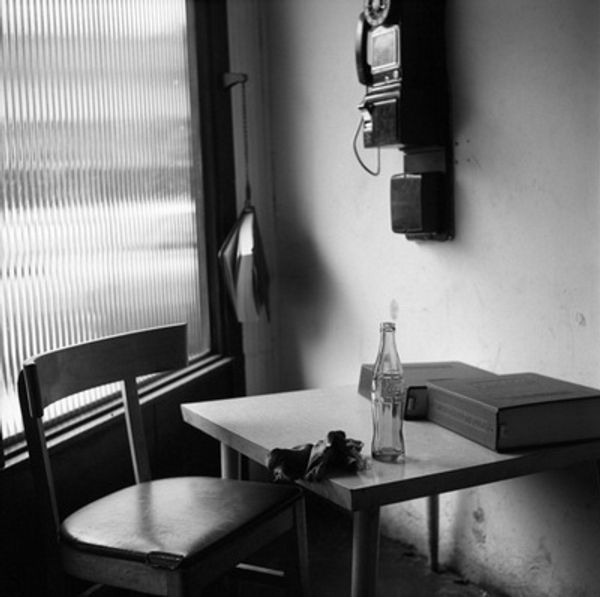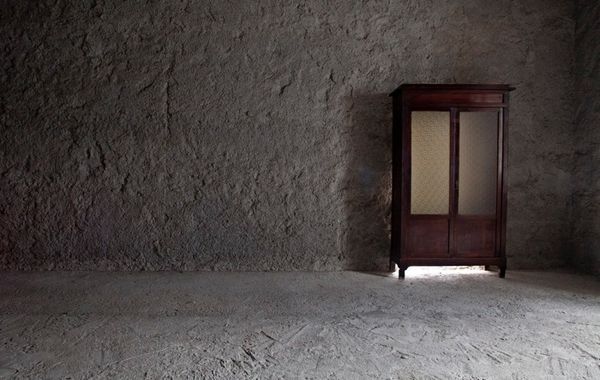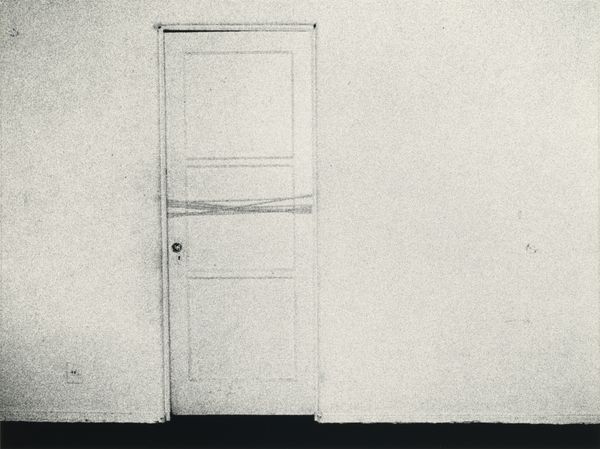
Copyright: Gian Maria Tosatti,Fair Use
Curator: Looking at Gian Maria Tosatti's "Klaus - Devotions VII" from 2008, I am struck by the palpable sense of decay and isolation. What’s your initial take? Editor: Foreboding. The materiality speaks volumes. The peeling paint, those worn metal chairs... it screams of abandonment, but also of institutional control. It makes me wonder about the stories embedded within these surfaces, what these objects have endured, and who produced them originally. Curator: It's interesting you mention the surfaces. Tosatti's installations often deal with the intersection of history and personal experience. This image, for me, evokes post-industrial decline and its impact on the social fabric. There’s almost a stage-like quality. Editor: Exactly! And what’s the deal with the figure up in the window there? Almost like they are imprisoned? Material conditions create mental conditions, if I were to get fancy, how can such confinement or isolation, such worn materials and sparse interiors create an idea of social and cultural power. It also calls attention to labor. What’s produced in spaces such as these? And what human toil lies hidden here? Curator: That's a keen observation. The figure does loom almost as an overseer, and the image seems to interrogate notions of power and surveillance. The "Devotions" series frequently delves into hidden social dynamics and marginalization within specific locations. The photographic rendering adds to the grim picture as a type of documentation of dereliction, and calls into attention narratives that have either passed from time, or become otherwise invisible to public life. Editor: So true. What does it mean for a material to become derelict? How can something once of great use come to the condition pictured here? I find these questions fascinating, how objects become signifiers of the human condition, rather than merely something made by human hands. Curator: Precisely. And by framing the scene in this way, Tosatti compels us to examine the material evidence of those shifts. I would venture to say there is almost a reverence to these discarded objects. The gallery world allows the artist to give power back to these often unseen moments. Editor: This makes me think… If you are an artwork inside an institution such as this space, how do labor conditions influence artistic practices? I do wonder how such imagery can play on the complex emotions surrounding value and access to art. What does art for all really mean? Curator: A critical point, as museums play a significant role in defining historical narratives, making visible or occluding various truths. Tosatti makes a crucial point to explore value with this installation through social dynamics. It truly gives cause to think about these important political elements. Editor: A potent and enduring reminder that materiality bears witness, wouldn't you agree? Curator: Absolutely, prompting us to consider the layered social contexts shaping our perceptions of decay and history.
Comments
No comments
Be the first to comment and join the conversation on the ultimate creative platform.
